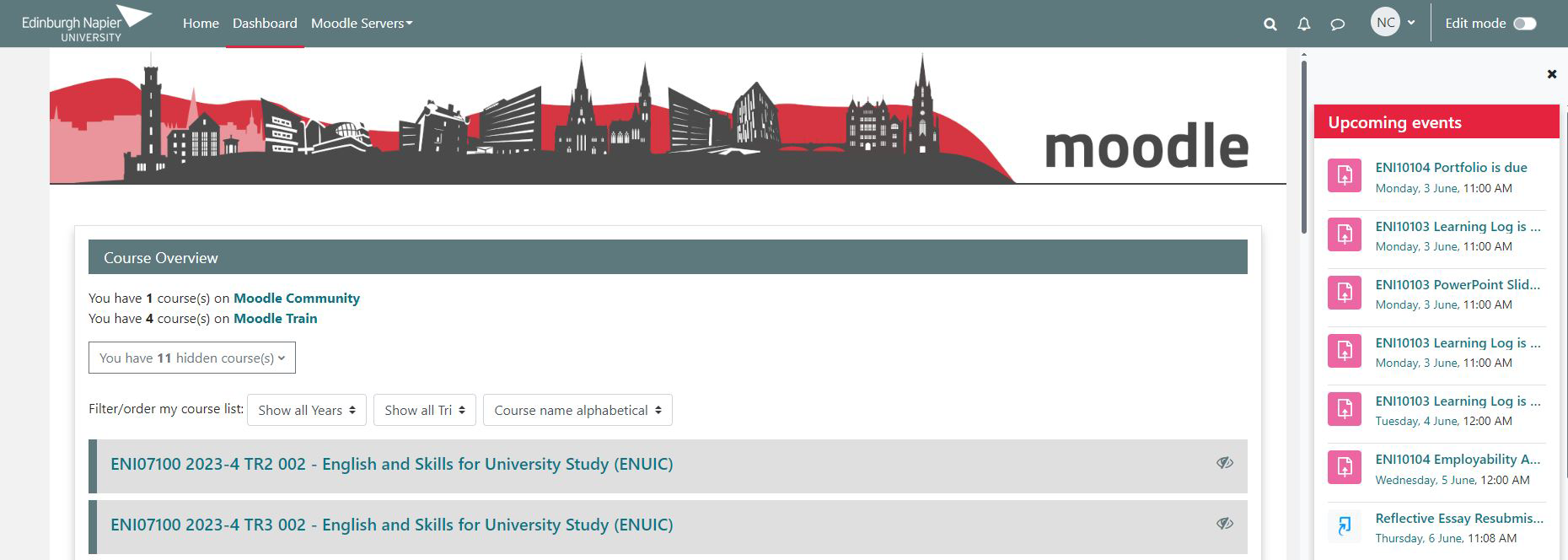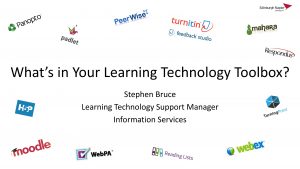Getting Started with Technology
The University provides a suite of academic technologies which are automatically available to you, and others you need to ask for due to licencing. Where to start depends on your immediate priorities so it is worth making contact with your campus Learning Technologist. In the meantime have a look around the site or view the presentation below for an overview of how these technologies can be used in a range of learning & teaching contexts.
Moodle Induction is a self-paced course that puts you in the role of a student to experience Moodle’s interactive features. It is aimed at academics or any staff who are new to Moodle, or just feel they have never had a chance to explore it properly in their own time. Click the above course link, then follow the prompt to enrol yourself and your ready to go!
How do I access my Moodle modules?
Access to the current Moodle modules you are teaching requires an enrolment, and this is carried out by a contact within your school administration office. They should be consulted in the first instance if you you cannot see a module listed on your Moodle dashboard.
Moodle is accessed from https://moodle.napier.ac.uk and is linked from the Quicklinks tab on the Staff Intranet. This will take you to your Moodle dashboard and where you will find links to the modules you are enrolled upon. The Course Overview block lets you filter the links so that only modules from specific sessions or trimesters are displayed. If you have courses on the Moodle Community, Training or Archive servers then these are accessible via links above the session/trimester filters.

Using Moodle in learning and teaching:
- Communicating with students
- Grouping students and allocating resources
- Quizzes and formative assessment
- Managing coursework submissions
- Grading and providing feedback
- Recording and publishing videos
Moving Beyond the Basics
The starting point in thinking about any learning and teaching intervention is usually the pedagogic model you want to use as all other considerations flow from that decision. What is it that you are trying to achieve with students? Once that is determined then you can decide the best way to approach delivery of your course and the tools you will need to achieve that.
The 3E Framework and associated guidance was originally developed in the context of the TESEP Project as a means for thinking about and introducing technology-enhanced opportunities for increasing student autonomy in the redesign of courses. The Academic Strategy recommends that the TESEP principles should continue to inform teaching and learning in the University, and the 3E Framework itself has been adapted by the University for use in the module approval process.
Click to see full size images



